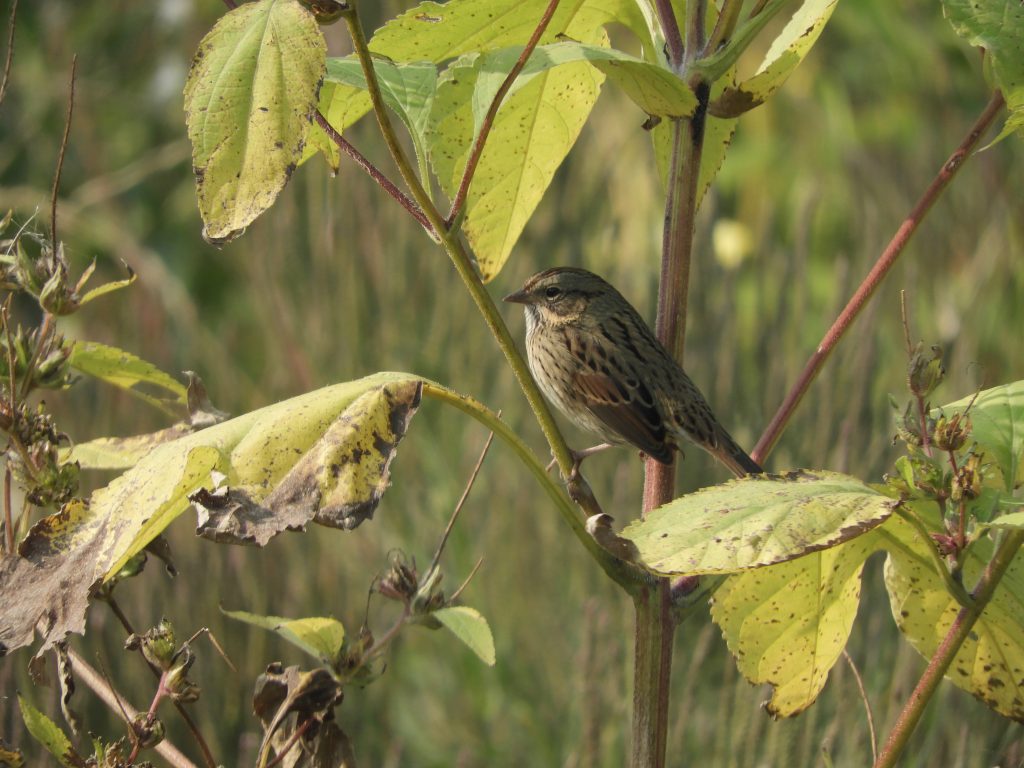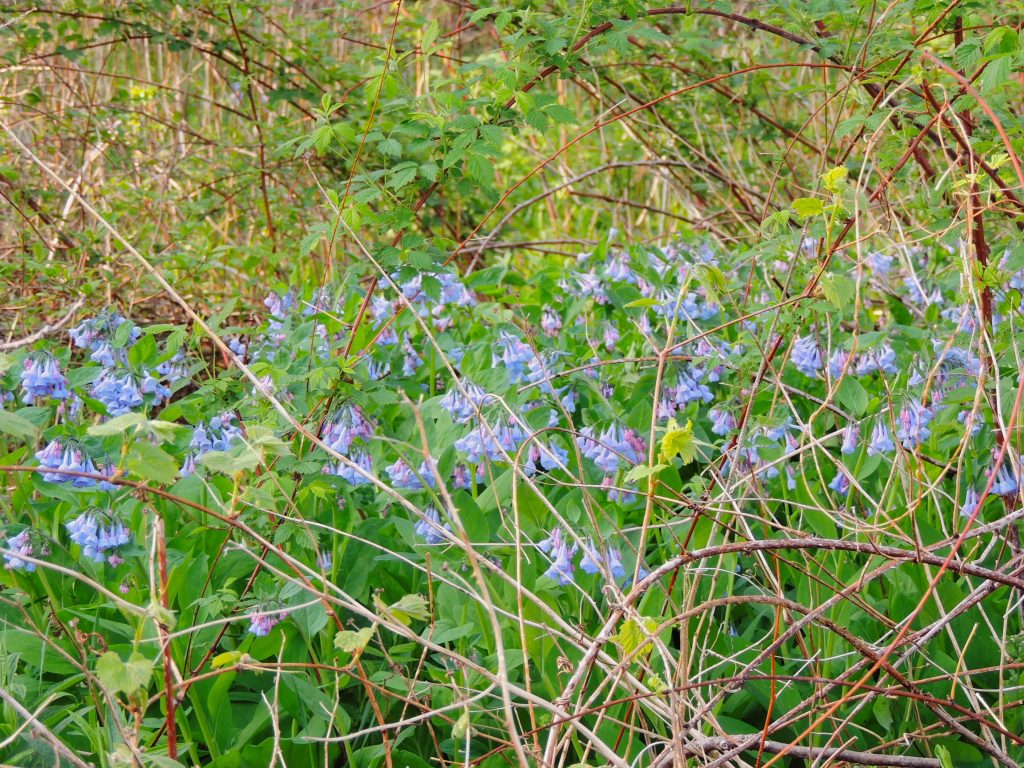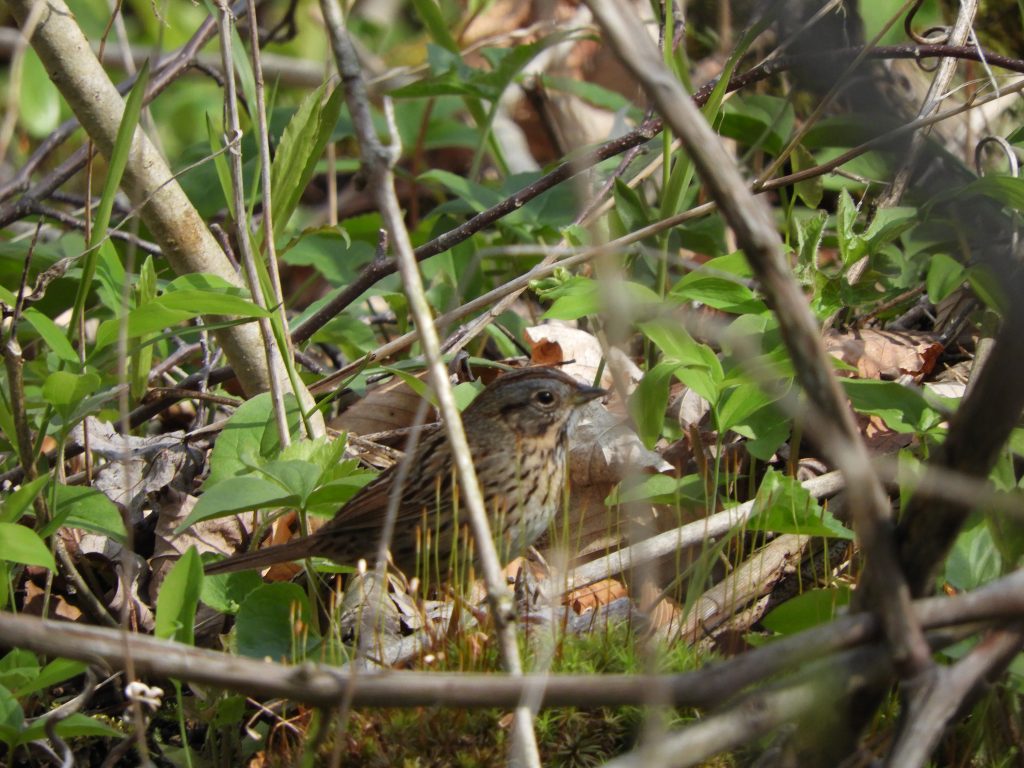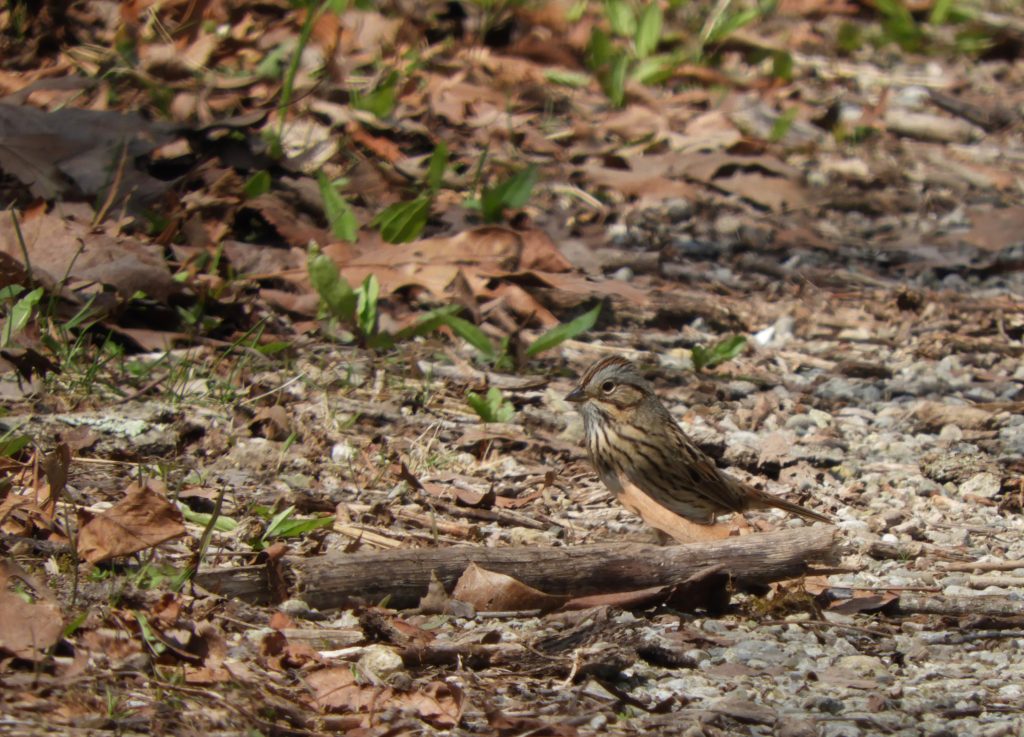
Our house, Burlington, ON. May 16th. 2021. We have a retreat corner in our back yard. It’s a quiet spot in the shade of a small dogwood and is becoming increasingly obscure behind Virginia Bluebells and emerging ferns. It’s not the sort of place for a party, too makeshift in many ways and far too cramped. But it’s exactly the sort of place I might seek out if I was birding. Some of my best birding experiences have come from sitting quietly in places like this. (As this Winter Wren encounter details.)

So, while sitting there this afternoon, a small sparrow popped into view at the edge of our flagstone patio just a few yards in front of me, from there it ran like stink, right to left, and disappeared into the thick cover of a flanking perennial bed. Surprisingly the same thing happened the next day under the same circumstances except that this time it was a pair of birds who did exactly the same sprint-run-and-dive for cover. It all happened so quickly, barely time enough to comprehend what I was seeing. But despite the fleetingness of the experiences, they could only have been one of two things, either Lincoln’s Sparrows or, at a pinch, Song Sparrows.
What complicates the choice is that Lincoln’s Sparrows are just about the most unlikely bird to see in an urban back yard. They are an elusive just-passing-through migrant that prefers to skulk in thickish undergrowth. In appearance they are maddeningly easy to confuse with the ubiquitous Song Sparrow, perhaps for that reason they were a nemesis bird of mine for many decades.

Pete Dunne, in his excellent book Pete Dunne’s Essential Field Guide Companion, makes this summary point, “…some dark alchemy blends this sparrow’s traits into a bland uniformity that even discerning eyes skip over; as a result, this species is often overlooked. There is no trick that could be offered here for making this identification. Only mindfulness will work.”
I think I managed no more than a total of five seconds looking at the birds, so identification is left to mindfulness. My line of reasoning was something like: They looked like Song Sparrows, but were trimmer and had finely streaked breasts (correct for Lincoln’s Sparrows) ; They ran fast and without pausing, just as a fearful rodents might (a recognized trait of Lincoln’s Sparrows); Song Sparrows don’t run and hide, and in any case, being a common resident species would almost certainly be a vocal and conspicuous part of my daily back yard, avifauna. They must have been Lincoln’s Sparrows.

Well, all of that is rather esoteric but it enlivened a couple of otherwise dreamy spring hours for me. And while I have no photo evidence of these particular birds, I have included some Lincoln’s Sparrows from other encounters, I doubt you will see what the excitement is about. Each to their own, they were Birds of the Day for me.
Seeing an elusive bird in your own backyard is always a treat. It shouldn’t be any more special, yet it is to me.
I have just come in (6 pm Friday) and saw the Lincoln’s Sparrow again by our back door. This time I was a bit closer but it was still too quick to allow the kind of lingering looks that I’d prefer. Still, that’s 5 days here in an urban back yard when it should be on its way to the far north.